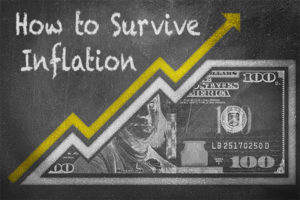Student Loans, Other Debts Are Stressing Americans More Than Ever
The American Psychological Association (APA) and the Federal Reserve Bank of New York aren’t working together on the mental and fiscal health of America — but they certainly could.
The APA released its annual “Stress in America” survey on Feb. 11 and noted a slight increase in stress levels in 2013. The first uptick since the survey started six years ago.
A week later, the Federal Reserve released its quarterly report on household debt and credit.
That report also showed a slight jump in consumer debt for 2013. It was the first boost since 2008.
As anyone dealing with the stress of debt can attest, the two are very much related.
Debt Rises for First Time in Five Years
There was definitely more debt in America in 2013, specifically in the last two quarters of the year. Total debt over those two quarters increased $368 billion.
That reversed a trend where consumers had reduced their debt in 18 of 19 quarters from the end of 2008 to the summer of 2013. Debt dropped an astounding $1.35 billion during that time and so did stress levels, as measured by the APA.
The APA’s “Stress in America” survey uses a 1 to 10 scale, with 1 representing no stress and 10 being extreme stress. Levels peaked in 2007 at 6.2 and declined every year when it reached 4.9 in 2012. The level jumped slightly to 5.1 in 2013.
“I think it is safe to say that being in debt is a stressful circumstance,” said Stuart Vyse, author of “Going Broke: Why Americans Can’t Hold on to Their Money” and professor of psychology at Connecticut College.
He says that once you achieve a certain standard of living, “it’s difficult to change and adapt to a simpler life. People continue to live beyond their means rather than reduce expenditures to meet their income and that can be very stressful.”
Student Loans Are Biggest Contributors to Stress
Total debt in America rose to $180 billion in 2013. It was down $188 billion the first two quarters of that year. It’s also the first year total debt jumped since 2008.
Overall, the total debt in America is $11.52 trillion, according to the Federal Reserve, well under the peak of $12.68 trillion after Q3 of 2008. Most of that drop is attributed to reduced credit card spending.
Student loan debt, which has soared from $579 billion in 2008 to $1.02 trillion at the end of 2013, accounts for the bulk of increased debt over the last five years. Approximately 70 percent of college students owe money at graduation, with an average student loan debt of $26,600.
That could explain why young adults, ages 18 to 33, showed the largest increase in stress levels recorded by the APA survey.
“As long as people are carrying large amounts of debt, they will continue to experience stress,” Vyse said. “And when there is uncertainty about the economy and employment, there is going to be even more stress.
“That’s why money is and always will be at or near the top of the list of stressors in the United States.”
Sources:
- NA (2014, February 11) Stress in America: Are Teens Adopting Adults' Stress Habits. Apa.org. Retrieved from http://www.apa.org/news/press/releases/stress/2013/stress-report.pdf
- NA (2013, February 7) Stress in America: Missing the Health Care Connection. Apa.org. Retrieved from http://www.apa.org/news/press/releases/stress/2012/full-report.pdf
- NA (2013, November 14) Household Debt and Credit Report. Newyorkfed.org. Retrieved from http://www.newyorkfed.org/householdcredit/2013-Q3/
- NA (2014, February 18) New York Fed Report Shows Households Adding Debt. Newyorkfed.org. Retrieved from http://www.newyorkfed.org/newsevents/news/research/2014/rp140218.html
- You will need Adobe Reader to view the PDF Download Adobe Reader


















